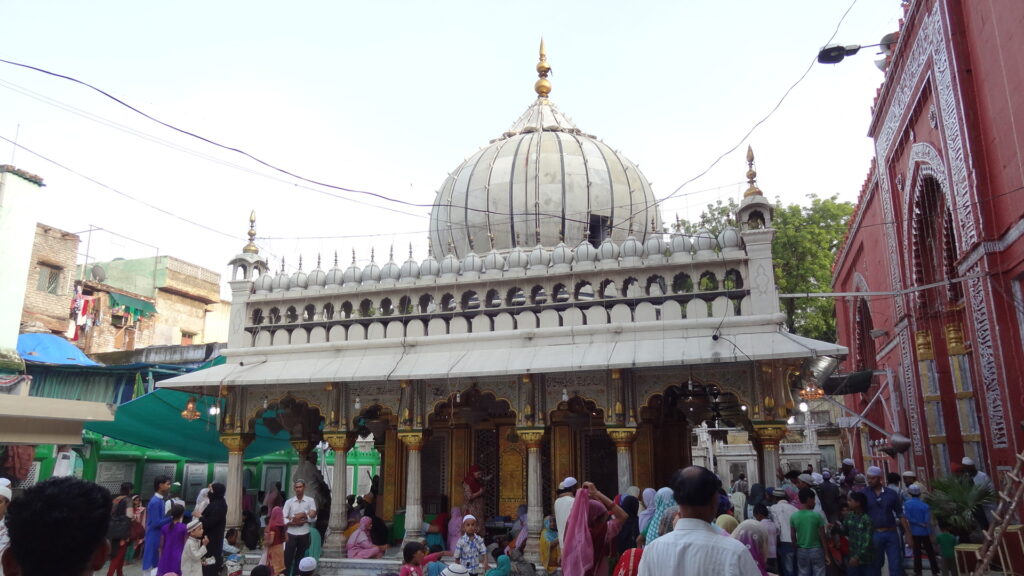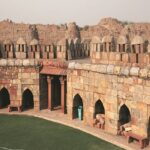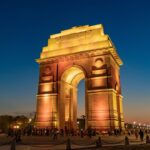If there is one place in Delhi where music transcends sound and becomes pure devotion, it is Nizamuddin Dargah. Nestled in the bustling lanes of Hazrat Nizamuddin, this shrine of the great Sufi saint Hazrat Nizamuddin Auliya is not just a religious site—it is a spiritual haven where qawwalis echo in the evenings, touching every heart present.
For centuries, the qawwalis at Nizamuddin Dargah have been more than just songs. They are heartfelt prayers in rhythm, blending Persian, Urdu, Hindi, and Braj poetry into melodies that transport listeners into a realm of divine love.
The Legacy of Qawwalis at Nizamuddin Dargah
Qawwali, a form of Sufi devotional music, was popularized in India by Amir Khusro, the disciple of Hazrat Nizamuddin Auliya. Khusro’s verses still form the soul of the qawwalis sung here.
- Spiritual Significance: Each qawwali is a zikr (remembrance of God) and a celebration of Sufi saints.
- Historic Roots: This tradition has been alive since the 14th century, making the dargah one of the most prominent hubs of Sufi music in the world.
- Timeless Appeal: Whether you understand the lyrics or not, the energy, hand-claps, and soaring vocals strike a universal chord.
Experiencing Qawwalis at the Dargah
Visiting Nizamuddin Dargah during qawwali night is like stepping into another world.
When to Visit
- Days: Every Thursday evening is the best time, though qawwalis are sung on other evenings as well.
- Timings: Usually after Maghrib (sunset) prayers, around 6:30–7:30 PM, continuing for 1–2 hours.
The Atmosphere
- The courtyard fills with devotees, travelers, photographers, and music lovers.
- The harmonium, tabla, and claps build a rhythm that resonates with the soul.
- Candles and incense add a mystical charm as voices rise in unison.
Popular Qawwalis You’ll Hear
- “Chhap Tilak Sab Chheeni” by Amir Khusro
- “Khwaja Mere Khwaja”
- “Man Kunto Maula”
- “Tajdar-e-Haram”
Why These Qawwalis Matter
The qawwalis at Nizamuddin Dargah are not about performance, but about surrender. They are sung not for entertainment but for devotion, blurring the line between music and prayer.
- Unity in Diversity: People of all faiths sit together, clapping along to the rhythm.
- Healing Power: Many visitors describe it as a cleansing, almost therapeutic experience.
- Living Heritage: This tradition keeps alive centuries of Delhi’s spiritual and cultural history.
Tips for Visitors
- Dress modestly: It’s a shrine, so cover your head (scarves are available at the entrance).
- No shoes inside: Footwear is left outside the dargah.
- Respect the space: Photography is allowed but avoid disturbing the singers and devotees.
- Reach early: The narrow lanes get crowded quickly, especially on Thursdays.
Nearest Metro and Accessibility
- Nearest Metro: JLN Stadium (Violet Line) or Jangpura Metro Station. From there, take an auto-rickshaw to the dargah.
- Bus Stand: Nizamuddin Bus Stand is nearby.
Conclusion
The qawwalis at Nizamuddin Dargah are not just music; they are an invitation to feel something beyond yourself—love, devotion, and connection with the divine. Whether you are a believer, a seeker, or just a lover of culture and music, an evening here will stay with you forever.
So, the next time you’re in Delhi, let the soulful echoes of qawwals at Nizamuddin guide your heart.



